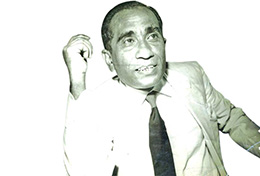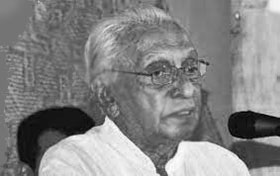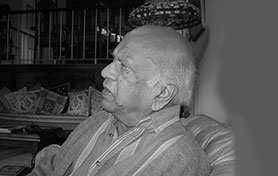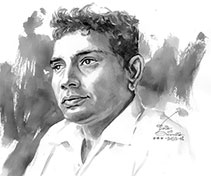Sinhala Nisadas
(Modern Sinhala Poetry)
Social evolution refers to the changes that occur in society over time. This process is also known as modernity. Scholars believe that the world became modern due to the intellectual revolution that took place in Europe. Modernism, characterized by a critical approach to existing ideas, emerged around 1930, alongside the European Industrial Revolution. As a result, traditional theories and ideologies that had prevailed in society were increasingly rejected. Consequently, conceptual changes took place in literature, music, architecture, cinema, painting, sculpture, and other forms of art. The modernist way of thinking opened new avenues for directing human thought in a fresh direction.
Modernity, Modernism and Literature
Among the many aspects that changed during the modernist movement, literature is one of the most important. This shift in literature is known as literary modernism. Several key characteristics define literary modernism, which emerged around the 1930s. These include a rejection of traditional ideologies, the questioning of religious and racial concepts, the pursuit of new forms of expression without reverence for the past, experimental approaches to presenting works, and the application of rational scientific thinking to literature. The thinkers who championed individual freedom and democratic ideals based on these characteristics were called the “Avant-garde.” Some of the world-renowned writers of the Avant-garde include T.S. Eliot, James Joyce, Wallace Stevens, Marcel Proust, and Virginia Woolf.
The Modern Era of Sinhala Literature
As modernism spread across Europe, literature in other parts of the world also began to embrace modernity, and Sinhala literature was no exception. The modern era of Sinhala literature is often considered to have begun after the fall of the Kandy Kingdom in 1815, marking the start of what is known as the Colombo era. However, the true development of Sinhala literature in line with modernist principles did not occur until the 1940s.
The beginning of the ““Nisadas”” poem and its connection to G.B. Senanayake
G.B. Senanayake is known as the father of free verse poetry. He published a collection of short stories titled “paliganema” in 1946. Among these short stories, there were eight works that were neither poems nor stories. Later, they were known as free verse poems. Accordingly, the writing of free verse in the modern Sinhala literary era began with the poet Senanayake in 1946. It is clear that G.B. Senanayake took inspiration for this poetic form from the Free Verse form of Western poets. However, it was a cause of a developmental change in Sinhala poetry.
The eight free verse poems that appeared in the short story titled
“paliganema” by G.B. Senanayake are given below.
- Ruwa dakeema (Seeing the image)
- Mama topa nohandunami (I don’t know you)
- Dewiyan mareema (Killing God)
- Sanda andura (Darkness of the evening)
- Warada (Guilt)
- Shishyawa (female student)
- Sundarathwaya (Beauty)
- Nishshabdatawaya (Silence)
Click on these original “Nisadas” poems and enjoy them.
What is “Nisadas”?
The Sinhala “Nisadas” poetry tradition, initiated by G.B. Senanayake, was significantly different from traditional Sinhala poetry. Fundamentally, the themes of “Nisadas” were closely aligned with modernity. These poems explored complex human emotions such as love, hatred, and sexuality, breaking away from conventional poetic norms.
Additionally, “Nisadas” poetry examined social traditions through a logical and scientific perspective, often criticizing the rigid structures of society. It also served as a medium for questioning and analyzing social hypocrisy. Furthermore, profound philosophical concepts found in Buddhism were often used as themes in “Nisadas” poetry.
As a result, “Nisadas” poetry became a highly popular literary form, resonating deeply and instantly with readers.




